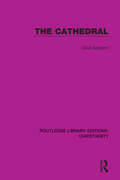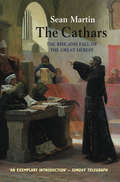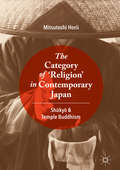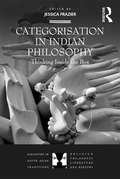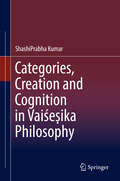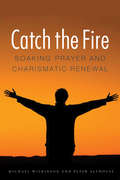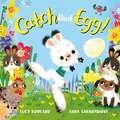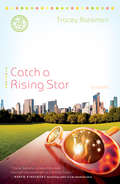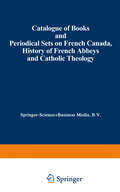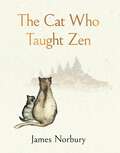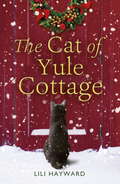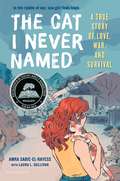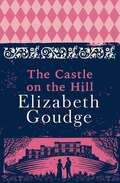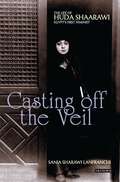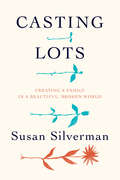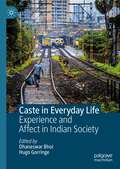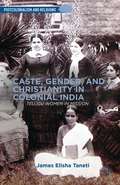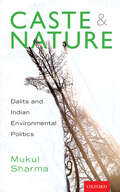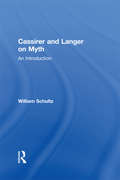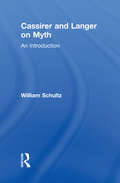- Table View
- List View
The Cathedral
by Clive SansomOriginally published in 1958, The Cathedral is a verse sequence evoking the spirit of an English cathedral and the characters associated with its history. Although Salisbury is at its core, the book does not focus on the portrait of one specific cathedral, but instead includes features from many. It brings to life the figures that it portrays, giving voices to a wide variety of characters from the Peasant’s Daughter to The Devil, and the Spire-Builder to the Queen. The Cathedral will appeal to those with an interest in poetry, Christianity, and religious architecture.
The Cathars: The Rise and Fall of the Great Heresy
by Sean MartinCatharism was the most successful heresy of the Middle Ages. Flourishing principally in the Languedoc and Italy, the Cathars taught that the world is evil and must be transcended through a simple life of prayer, work, fasting and non-violence. They believed themselves to be the heirs of the true heritage of Christianity going back to apostolic times, and completely rejected the Catholic Church and all its trappings, regarding it as the Church of Satan; Cathar services and ceremonies, by contrast, were held in fields, barns and in people's homes. Finding support from the nobility in the fractious political situation in southern France, the Cathars also found widespread popularity among peasants and artisans. And again unlike the Church, the Cathars respected women, and women played a major role in the movement. Alarmed at the success of Catharism, the Church founded the Inquisition and launched the Albigensian Crusade to exterminate the heresy. While previous Crusades had been directed against Muslims in the Middle East, the Albigensian Crusade was the first Crusade to be directed against fellow Christians, and was also the first European genocide. With the fall of the Cathar fortress of Montségur in 1244, Catharism was largely obliterated, although the faith survived into the early fourteenth century. Today, the mystique surrounding the Cathars is as strong as ever, and Sean Martin recounts their story and the myths associated with them in this lively and gripping book.
The Category of ‘Religion’ in Contemporary Japan: Shūkyō and Temple Buddhism
by Mitsutoshi HoriiThis book critically examines the term ‘religion’ (shūkyō) as a social category within the sociological context of contemporary Japan. Whereas the nineteenth-century construction of shūkyō has been critically studied by many, the same critical approach has not been extended to the contemporary context of the Japanese-language discourse on shūkyō and Temple Buddhism. This work aims to unveil the norms and imperatives which govern the utilization of the term shūkyō in the specific context of modern day Japan, with a particular focus upon Temple Buddhism. The author draws on a number of popular publications in Japanese, many of which have been written by Buddhist priests. In addition, the book offers rich interview material from conversations with Buddhist priests.Readers will gain insights into the critical deconstruction, the historicization, and the study of social classification system of ‘religion’, in terms of its cross-cultural application to the contemporary Japanese context. The book will be of interest to students and scholars across a range of disciplines including Japanese Studies, Buddhology, Religious Studies, Social Anthropology, and Sociology.
The Category of ‘Religion’ in Contemporary Japan: Shūkyō and Temple Buddhism
by Mitsutoshi HoriiThis book critically examines the term ‘religion’ (shūkyō) as a social category within the sociological context of contemporary Japan. Whereas the nineteenth-century construction of shūkyō has been critically studied by many, the same critical approach has not been extended to the contemporary context of the Japanese-language discourse on shūkyō and Temple Buddhism. This work aims to unveil the norms and imperatives which govern the utilization of the term shūkyō in the specific context of modern day Japan, with a particular focus upon Temple Buddhism. The author draws on a number of popular publications in Japanese, many of which have been written by Buddhist priests. In addition, the book offers rich interview material from conversations with Buddhist priests.Readers will gain insights into the critical deconstruction, the historicization, and the study of social classification system of ‘religion’, in terms of its cross-cultural application to the contemporary Japanese context. The book will be of interest to students and scholars across a range of disciplines including Japanese Studies, Buddhology, Religious Studies, Social Anthropology, and Sociology.
Categorisation in Indian Philosophy: Thinking Inside the Box (Dialogues in South Asian Traditions: Religion, Philosophy, Literature and History)
by Jessica FrazierIt is by fitting the world into neatly defined boxes that Buddhist, Hindu, and Jain philosophers were able to gain unparalleled insights into the nature of reality, God, language and thought itself. Such categories aimed to encompass the universe, the mind and the divine within an all-encompassing system, from linguistics to epistemology, logic and metaphysics, theology and the nature of reality. Shedding light on the way in which Indian philosophical traditions crafted an elaborate picture of the world, this book brings Indian thinkers into dialogue with modern philosophy and global concerns. For those interested in philosophical traditions in general, this book will establish a foundation for further comparative perspectives on philosophy. For those concerned with the understanding of Indic culture, it will provide a platform for the continued renaissance of research into India's rich philosophical traditions.
Categorisation in Indian Philosophy: Thinking Inside the Box (Dialogues in South Asian Traditions: Religion, Philosophy, Literature and History)
by Jessica FrazierIt is by fitting the world into neatly defined boxes that Buddhist, Hindu, and Jain philosophers were able to gain unparalleled insights into the nature of reality, God, language and thought itself. Such categories aimed to encompass the universe, the mind and the divine within an all-encompassing system, from linguistics to epistemology, logic and metaphysics, theology and the nature of reality. Shedding light on the way in which Indian philosophical traditions crafted an elaborate picture of the world, this book brings Indian thinkers into dialogue with modern philosophy and global concerns. For those interested in philosophical traditions in general, this book will establish a foundation for further comparative perspectives on philosophy. For those concerned with the understanding of Indic culture, it will provide a platform for the continued renaissance of research into India's rich philosophical traditions.
Categories, Creation and Cognition in Vaiśeṣika Philosophy
by ShashiPrabha KumarThe proposed book presents an overview of select theories in the classical Vaiśeṣika system of Indian philosophy, such as the concept of categories, creation and existence, atomic theory, consciousness and cognition. It also expounds in detail the concept of dharma, the idea of the highest good and expert testimony as a valid means of knowing in Vaiśeṣika thought. Some of the major themes discussed are the religious inclination of Vaiśeṣika thought towards Pasupata Saivism, the affiliation of the Vaiśeṣika System to the basic foundations of Indian philosophical thought, namely Veda and Yoga, and their insights into science, hermeneutics and metaphysics. In addition, this book includes recent Sanskrit commentaries on key Vaiśeṣika texts and provides a glimpse of Vaiśeṣika studies across the world. Overall, this book enunciates the Vaiśeṣika view from original sources and is an important work for Vaiśeṣika studies in current times for serious students as well as researchers.
Categorically Jewish, Distinctly Polish: Polish Jewish History Reflected and Refracted (The Littman Library of Jewish Civilization)
by Moshe RosmanMoshe Rosman's revolutionary approach has become a cornerstone of Polish Jewish historiography. Challenging conventions, he asserts that the 'marriage of convenience' between the Jews and the Polish--Lithuanian Commonwealth was a dynamic relationship that, though punctuated by crisis and persecution, developed into a saga of overall achievement and stability. With that fundamental message this book forges a thematic survey of Jewish history in early modern Poland. These essays, written by Rosman over the course of a distinguished career, have all been updated and enhanced with new detail and nuanced arguments, taking account not only of new archival material and research but also of the ongoing evolution of the author’s own knowledge and perspectives. Some appear here in English for the first time. The volume's structure highlights key topics for understanding the Polish Jewish past: relations between Jews and other Poles; Jewish communal life; Polish Jewish women; and hasidism. One section analyses how this past has been presented in both scholarly and popular modes. The essays are crafted to place them in dialogue with each other. Analytical introductions weigh their significance in the light of modern and postmodern Jewish and Polish historiography. An extensive general introduction sets the context of the history portrayed here, while a thoughtful conclusion elucidates the larger motifs that emerge.
Catch the Fire: Soaking Prayer and Charismatic Renewal
by Michael Wilkinson Peter AlthouseA recent phenomenon of charismatic renewal took place in Toronto in the mid-1990s. Commonly known as the "Toronto Blessing" and operated by the former Vineyard Church leaders John and Carol Arnott, the renewal was defined by reports of uncontrollable laughter, weeping, speaking in tongues, animal noises, and falling on the floor during worship. Sympathetic Christians embraced these practices while others who believed that this form of worship boarded on spectacle rejected them. By the end of the 1990s most people thought that the renewal was over. Yet, in the first decade of the twenty-first century, the authors—a sociologist and a theologian—heard rumors that the Toronto church, now known as "Catch the Fire," was still holding mass meetings with upwards of 2,000 people in attendance. They also learned of an emerging practice of "soaking prayer," an adaption of Pentecostal-charismatic prayer that, participants and leaders claim, facilitates and expands the reception of divine love in order to give it away in acts of forgiveness, reconciliation, compassion, and benevolence. Soaking, the authors reveal, is a metaphor for practices like resting in the Spirit, prayer for spiritual gifts, healing, prophecy, impartation, and supports overall charismatic spirituality. Attending "Catch the Fire" conferences, churches, and house meetings in the United States, Canada, Britain, Australia, and New Zealand, Wilkinson and Althouse observed first-hand how people soak, what it means to soak, and why soaking is considered an important practice among charismatics.
Catch That Egg!
by Lucy RowlandFloppit's farmyard friends have had enough of his enormous bunny feet causing chaos! But his big clumsy feet might just save the day when Chicken's egg rolls away . . . Help Floppit the big-footed bunny "stop that egg" in this fun farmyard egg chase. Perfect for fans of Rabbits Don't Lay Eggs! and Peppa Pig: Peppa's Easter Egg Hunt. With gentle rhyming, Catch That Egg! is written by Lucy Rowland, the brilliantly talented author of Little Red Reading Hood, Jake Bakes a Monster Cake and Pirate Pete and His Smelly Feet, and illustrated by Anna Chernyshova, the fantastic illustrator of Santa Selfie.
Catch a Rising Star: A Novel
by Tracey BatemanWhen thirty-something Tabby Brockman has the opportunity to reclaim her role as a killed-off character on the nation's #1 daytime soap opera, she figures this must be God's reward. But back on the set, she's faced with the same hateful head writer who killed off her character in the first place, kids who drive her crazy, a stage dad who rubs her completely wrong, and and an unwanted boyfriend who can?t seem to get the message. Faced with this dizzying rollercoaster of challenges, Tabby has to wonder: is she finally a star on the rise or just on the brink of another spectacular fall?
Catalogue of English Bible Translations: A Classified Bibliography of Versions and Editions Including Books, Parts, and Old and New Testament Apocrypha and Acpocryphal Books (Bibliographies and Indexes in Religious Studies)
by William J. ChamberlinWhile other Bible catalogs are available, this comprehensive reference book is destined to become the standard in the field. Chamberlin's one-volume work traces the publication history of multiple editions of Bible translations and offers valuable decriptive annotations. The catalog not only includes complete Bibles, but also Old and New Testaments, partial texts, commentaries that include translations, children's Bibles, Apocryphal writings, and the Koran, as well. Other bibliographies are usually limited to editions commonly found in academic libraries, but Chamberlin's guide also includes Bibles found in private collections. Overall, this catalogue contains more than five times as many entries of different English translations as two other Bible bibliographies, those by Hill and Herbert, combined.The entries are grouped in 151 categories, and within each category entries are listed in chronological order. The accompanying annotations identify the translator and provide an overview of the contents of each work. The detailed indexes make this bibliography a convenient tool for researchers. Bible scholars, collectors, and rare book dealers will find this catalogue a necessary addition to their libraries.
Catalogue of Books and Periodical Sets on French Canada, History of French Abbeys and Catholic Theology
by Martinus NijhoffThe Cat Who Taught Zen: The beautifully illustrated new tale from the bestselling author of Big Panda and Tiny Dragon
by James NorburyTHE BIG PANDA AND TINY DRAGON AUTHOR AND ILLUSTRATOR JAMES NORBURY TELLS THE STORY OF THE CAT WHO LEARNED HOW TO BE MORE ZEN . . ."I've learnt that what we want is seldom what we need, and what we need is almost never what we want"This is the tale of a cat wise in the ways of zen, journeying to discover a fabled ancient pine, under which infinite wisdom may be found.Along the way he meets a vivid cast of animals: from an anxious monkey and a tortoise tired of life, to a tiger struggling with anger, a confused wolf cub and a covetous crow.But it's a surprise encounter with a playful kitten, that forces the cat to question everything . . .Told in a gentle, calming style, The Cat Who Taught Zen introduces a new cast of characters for readers of all ages to fall in love with, offering timeless wisdom wrapped up into a tale of beguiling beauty.__________Big Panda and Tiny Dragon, Sunday Times bestseller, July 2022
The Cat of Yule Cottage: A Magical Tale of Romance, Christmas and Cats
by Lili HaywardA magical tale of Christmas and cats, perfect for everyone who loves A Street Cat Named Bob and Alfie the Doorstep Cat.It's nearly Christmas, and Jessamine Pike needs a serious life overhaul.Jess moves into Enysyule, a centuries-old cottage in Cornwall, and begins the process of renovating the rundown house by day and finishing her novel by night, planning to have both finished in time for the holidays. She's got good company: a beautiful, arrogant tomcat stalks around like he owns the place, and seems very skeptical of Jess' tenancy. But there's magic in the air... Local legends tell of a spirit that inhabits the area, and an ancient standing stone that keeps watch over the valley. As Christmas comes closer and closer, Jess uncovers treasures from Enysyule's past, and becomes involved in a fight for its future. For Jess has stumbled into a story that's been going on for five hundred years. A story about land, love, friendship, the Yuletide... and one remarkable cat.
The Cat I Never Named: A True Story of Love, War, and Survival
by Amra Sabic-El-Rayess Laura L. SullivanThe stunning memoir of a Muslim teen struggling to survive in the midst of the Bosnian genocide--and the stray cat who protected her family through it all.In 1992, Amra was a teen in Bihac, Bosnia, when her best friend said they couldn't speak anymore. Her friend didn't say why, but Amra knew the reason: Amra was Muslim. It was the first sign her world was changing. Then Muslim refugees from other Bosnian cities started arriving, fleeing Serbian persecution. When the tanks rolled into Bihac, bringing her own city under seige, Amra's happy life in her peaceful city vanished. But there is light even in the darkest of times, and she discovered that light in the warm, bonfire eyes of a stray cat. The little calico had followed the refugees into the city and lost her own family. At first, Amra doesn't want to bother with a stray; her family doesn't have the money to keep a pet. But with gentle charm this kitty finds her way into everyone's heart, and after a few near miracles when she seems to save the family, how could they turn her away? Here is the stunning true story of a teen who, even in the brutality of war, never wavered in her determination to obtain an education, maintain friendships, and even find a first love-and the cat who gave comfort, hope, and maybe even served as the family's guardian spirit.
The Castle on the Hill
by Elizabeth GoudgeAmid the chaos of the Second World War comes a charming story of courage and friendship, from the author of Green Dolphin Country and A City of Bells.In the summer of 1940, as the darkest days of the Second World War approach, a chance encounter on a train leads Miss Brown to become housekeeper at the Castle.Hidden in a quiet, rural corner of England, the crumbling castle is home to lonely historian Mr Birley and his nephews, fighter pilot Richard and fair, peace-loving Stephen. With young evacuees Moppet and Poppet, and mysterious violinist Jo Isaacson, this unexpected family of strangers come to rely on each other as the devastations of war rage on.
Casting off the Veil: The Life of Huda Shaarawi, Egypt's First Feminist
by Sania Sharawi LanfranchiIn 1923, when the pioneer of feminist activism, Huda Shaarawi, removed her veil in Cairo's train station, she created what became a landmark (and much-copied) gesture for feminists throughout Egypt and the Middle East and cemented her status as one of the most important feminists in twentieth-century Egypt. In Casting off the Veil, her granddaughter Sania Sharawi Lanfranchi uses never-before seen letters and photographs to explore the life and thought of Egypt's first feminist, as she campaigned against British occupation, as well as striving to improve conditions for women throughout the country. From her birth into a wealthy and powerful family, her early years spent in a harem, to her iconic status as one of the most influential feminists in Middle Eastern history, this is a fascinating portrait of a determined and ground-breaking woman, a rich and important story which will captivate everyone with an interest in Egyptian, feminist or colonial history.
Casting Lots: Creating a Family in a Beautiful, Broken World
by Susan SilvermanSusan Silverman grew up with parents who were, both before and after a devastating loss, atheists. Yet, as a young adult, she shocked everyone who knew her ("But you were elected Class Flirt in high school!") and became a rabbi. What was not surprising, however, was that she built her own big, unwieldy family through both birth and adoption, something she had intended from childhood. With three daughters and two sons ("We produce girls and import boys"), this unique family becomes a metaphor for the world's contradictions and complexities-a microcosm of the tragedy and joy, hope and despair, cruelty and compassion, predictability and absurdity of this world we all live in. A meditation on identity, faith, and belonging-one that's as funny as it is moving-Casting Lots will resonate with anyone who has struggled to find their place in the world and to understand the significance of that place.
Casting Lots: Creating a Family in a Beautiful, Broken World
by Susan SilvermanSusan Silverman grew up with parents who were, both before and after a devastating loss, atheists. Yet, as a young adult, she shocked everyone who knew her ("But you were elected Class Flirt in high school!") and became a rabbi. What was not surprising, however, was that she built her own big, unwieldy family through both birth and adoption, something she had intended from childhood. With three daughters and two sons ("We produce girls and import boys"), this unique family becomes a metaphor for the world's contradictions and complexities-a microcosm of the tragedy and joy, hope and despair, cruelty and compassion, predictability and absurdity of this world we all live in. A meditation on identity, faith, and belonging-one that's as funny as it is moving-Casting Lots will resonate with anyone who has struggled to find their place in the world and to understand the significance of that place.
Caste in Everyday Life: Experience and Affect in Indian Society
by Dhaneswar Bhoi Hugo GorringeThis edited volume brings together a range of scholars to reflect on the varied ways in which caste is manifested and experienced in social life. Each chapter draws on different methods and approaches but all consider lived experiences and experiential narrations. Considering Guru and Sarukkai’s path-breaking work on ‘Experience, Caste and the Everyday Social’ (2019), this volume applies the insights of the theories to multiple settings, issues and communities. Unique to this volume, Brahmin and other dominant castes' experiences are considered, rather than simply focusing on the lives of oppressed castes (Dalits). Analysis of cross-caste friendships or romances and marriages, furthermore, brings out the intimate and ingrained aspects of caste. Taken together, therefore, the contributions in this volume offer rich insights into caste and its consciousness within the framework of everyday experiences.
Caste, Gender, and Christianity in Colonial India: Telugu Women in Mission (Postcolonialism and Religions)
by J. TanetiBeginning in the nineteenth century, native women preachers served and led nascent Protestant churches in much of Southern India, evolving their own mission theology and practices. This volume examines the impact of Telugu socio-political dynamics, such as caste, gender, and empire, on the theology and practices of the Telugu Biblewomen.
Caste and nature: Dalits and Indian Environmental Policies
by Mukul SharmaRarely do Indian environmental discourses examine nature through the lens of caste. Whereas nature is considered as universal and inherent, caste is understood as a constructed historical and social entity. Mukul Sharma shows how caste and nature are intimately connected. He compares Dalit meanings of environment to ideas and practices of neo-Brahmanism and certain mainstreams of environmental thought. Showing how Dalit experiences of environment are ridden with metaphors of pollution, impurity, and dirt, the author is able to bring forth new dimensions on both environment and Dalits, without valourizing the latter’s standpoint. Rather than looking for a coherent understanding of their ecology, the book explores the diverse and rich intellectual resources of Dalits, such as movements, songs, myths, memories, and metaphors around nature. These reveal their quest to define themselves in caste-ridden nature and building a form of environmentalism free from the burdens of caste. The Dalits also pose a critical challenge to Indian environmentalism, which has, until now, marginalized such linkages between caste and nature.
Cassirer and Langer on Myth: An Introduction (Theorists of Myth)
by William SchultzFirst Published in 2000. Routledge is an imprint of Taylor & Francis, an informa company.
Cassirer and Langer on Myth: An Introduction (Theorists of Myth #12)
by William SchultzFirst Published in 2000. Routledge is an imprint of Taylor & Francis, an informa company.
